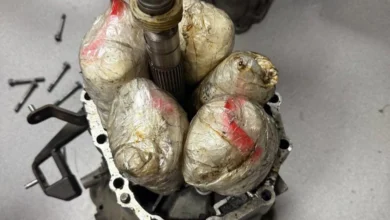March 31 – Day of Genocide of Azerbaijanis
Azerbaijan honors memory of victims of genocide committed by Armenians and Bolsheviks on March 31, 1918
Tragedies and genocides have been inscribed in the history of Azerbaijan, along with numerous glorious pages, over the past 200 years, Turanews.kz reports citing Trend.
One of these terrible events occurred from March through April 1918. Dozens of thousands of peaceful Azerbaijanis were brutally killed only on the basis of their nationality during these events, which went down in the history of Azerbaijan as the genocide of March 31.
One hundred and five years ago, Armenian Dashnaks and Bolsheviks committed unprecedented atrocities against the Azerbaijani population in Baku, Shamakhi, Guba, Karabakh, Zangazur, Nakhchivan, Lankaran, Ganja and other regions, killing over 70,000 people with extreme violence, including women, old people and children, burned the villages, expelled the inhabitants from their homes.
Armenian armed formations wiped out 229 villages in Baku province, 272 in Ganja province, 115 in Zangazur province, and 157 villages in Karabakh.
Most of the population in the territory of present-day Armenia, that is, living in the lands of Western Azerbaijan, about 565,000 people, were brutally killed or expelled from the lands of their ancestors as a result of the genocide committed from 1918 through 1920 by Armenian Andranik’s bandit detachments against Azerbaijanis.
Numerous masterpieces of national architecture, schools, hospitals, mosques and other monuments were destroyed.
An extraordinary Commission of Inquiry was established to investigate this tragedy by the Decree of the Council of Ministers of the Azerbaijan Democratic Republic dated July 15, 1918.
The commission the first stage investigated grave crimes committed by Armenians in Shamakhi and on the territory of the Irevan province.
Special structure was established under the Ministry of Foreign Affairs to bring this truth to the international community.
March 31 was declared a day of national mourning by the Azerbaijan Democratic Republic.
An attempt was made for the first time in history, to give a political assessment of the aggressive processes of genocide against Azerbaijanis, which have been going on for more than a century. However, activities in this area were interrupted after the fall of the Azerbaijan Democratic Republic.
Turning the pages of history, face new facts testifying to the atrocities of the Armenians.
Searches have been expanding to clarify information, recently. Numerous undeniable archival documents, evidence of the genocide are revealed.
For example, with regard to the number of those killed in Shamakhi from March through April 1918, in some sources, this figure is 7,000, in others from 8,000 to 12,000 and even 40,000.
The documents of the Extraordinary Investigation Commission, created by the government of the Azerbaijan Democratic Republic, note that in March-April 1918, 3632 men, 1771 women, 956 children were brutally killed in 58 Azerbaijani villages in the Shamakhi province. However, according to experts, based on archival documents, 8,027 Azerbaijanis were killed in 53 villages of the Shamakhi province, 4,190 of them were men, 2,560 were women, and 1,277 were children. According to other sources, 7,000 people were killed in 72 villages of Shamakhi, including 1,653 women and 965 children.
The Extraordinary Investigative Commission testifies that 86 out of 120 villages were subjected to Armenian aggression in the Shamakhi province.
Due to the fact that the Azerbaijan Democratic Republic commission interrupted its work, it is impossible to find information about the other 34 villages.
Local researchers have been carrying out a number of works in connection with the calculation of the number of people killed in the city of Shamakhi from March through April 1918, since the 90s of the last century.
As a result of their research (memoirs and information collected from about a hundred witnesses), It was established that under the leadership of Armenian criminals S. Shaumyan, S. Lalayev, Z. Arestisyan, brothers T. Amirov and A. Amiryan, about 14,000 – 16,000 people were killed in the city of Shamakhi, in its 40 villages and settlements – 6,000 – 8,000 people.
The number of persons expelled from the Shamakhi district amounted to more than 18,000 people.
More than 16,000 people were killed with extreme cruelty in the Guba district, 167 villages were destroyed as a result of the Armenian armed attack during the first five months of 1918.
A number of new facts about the massacres of Azerbaijanis by Armenian-Dashnak detachments in the Guba district have been discovered. Mass graves discovered in 2007 in the city of Guba is one of these facts.
Armenian military formations committed massacres in Guba not only to the Turkish-Muslim population, but also to Jews.
It was found that, about 3,000 Jews were killed by Armenians in Guba from 1918 through 1919, as a result of the research.
Through the policy of military aggression against Azerbaijan, which lasted for almost 30 years, Armenia continued to commit crimes against Azerbaijanis on ethnic grounds.
On the night of February 25-26, 1992, another terrible genocide was committed in the Azerbaijani city of Khojaly.
A total of 613 people were killed with particular cruelty, including 106 women, 63 children and 70 old people, 487 people were seriously injured, including 76 children, 1275 people were taken hostage as a result of a treacherous attack on the city at night.
The Azerbaijani state has taken all the necessary steps to bring the truth about the March genocide to the world. After 80 years – on March 26, 1998, an adequate political assessment was given of these horrific events by the Decree of the President of the Republic of Azerbaijan “On the Genocide of Azerbaijanis”, signed by National Leader Heydar Aliyev and 31 March was declared the Day of Genocide of Azerbaijanis.
The Decree of Heydar Aliyev “On the mass deportation of Azerbaijanis from their historical and ethnic lands in the Armenian SSR from 1948 through 1953” dated December 18, 1997 is of great importance in terms of a comprehensive study of the deportation of Azerbaijanis from the territory of the Armenian SSR, giving a political and legal assessment these crimes bringing it to the attention of the international community.
These decrees are important not only for research and perpetuating the bloody pages of our history but also for exposing Armenian chauvinism and terrorism.
President of Azerbaijan Ilham Aliyev signed an Order in 2018, on the eve of the 100th anniversary of the genocide in order to more fully bring the truth about this crime against Azerbaijanis to the public of the country and the whole world. The special action plan was developed and implemented for this purpose.



